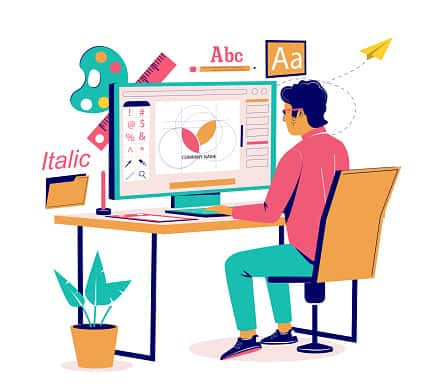Essential Design Tips for Beginners
Starting out in design can feel overwhelming, but with the right guidance, you’ll be able to create beautiful and effective work. Whether you’re working on graphics, web design, or branding, following a few key principles will make a big difference. In this article, we’ll cover essential design tips to help beginners build a strong foundation in design.
Understand the Basics of Design
Before diving into the creative process, it’s important to understand the fundamentals. The first essential design tip for beginners is to familiarize yourself with the basic design principles: balance, contrast, alignment, repetition, and hierarchy. These concepts are the foundation of any design. They help you create visually appealing layouts and ensure that your designs are easy to understand.

Choose the Right Colors
Color plays a huge role in the overall impact of a design. One of the most essential design tips is to choose colors that complement each other and reflect the tone of your project. Use color schemes wisely to convey mood and emotion. For instance, soft blues and greens can create a calming effect, while bold reds and yellows add energy and excitement. Stick to a limited palette to avoid overwhelming your audience, and always ensure good contrast between text and background.
Master Typography
Typography is a crucial part of any design, and mastering it is another essential design tip. The fonts you choose should align with the message of your project and be easy to read. Beginners should avoid using too many fonts in one design; sticking to two or three fonts will help maintain consistency. Make sure your headings stand out and that body text is legible, even on smaller screens.
Use White Space Effectively
One mistake many beginners make is overcrowding their designs. A critical essential design tip is to use white space effectively. White space, or negative space, is the area around your design elements that gives your layout room to breathe. It helps create a clean, organized look and can make key elements stand out. Don’t be afraid of empty spaces; they are just as important as the elements you include.
Keep It Simple
One of the most important essential design tips is simplicity. Simplicity doesn’t mean boring, but rather focusing on clarity and avoiding unnecessary elements. A cluttered design can confuse your audience and distract from the main message. Focus on the core idea you want to communicate, and eliminate anything that doesn’t contribute to that purpose. A clean, straightforward design is often more impactful than a busy one.
Learn the Tools of the Trade
In today’s digital age, knowing how to use design software is a must. A vital essential design tip for beginners is to become familiar with tools like Adobe Photoshop, Illustrator, or free alternatives like Canva. Spend time practicing and learning shortcuts that will save you time and help you create professional-looking designs. Mastering these tools gives you more freedom to explore your creativity.
Seek Feedback and Keep Practicing
Feedback is essential for growth. One of the most valuable essential design tips for beginners is to show your work to others, especially more experienced designers, and be open to constructive criticism. This will help you see your work from different perspectives and identify areas for improvement. In addition, practice is key. The more designs you create, the more you’ll learn and improve over time.
Stay Inspired
Finally, one of the most motivating essential design tips is to stay inspired. Follow the work of talented designers, explore different design styles, and look for inspiration in unexpected places like nature, architecture, or even music. Surrounding yourself with inspiration will help you stay creative and push the boundaries of your design skills.
Conclusion
Starting your design journey doesn’t have to be intimidating. By applying these essential design tips—understanding design principles, mastering typography, using color and white space wisely, and keeping it simple—you’ll be well on your way to creating professional and effective designs. Remember, practice and feedback are key to continuous improvement, so keep experimenting and learning as you go.



